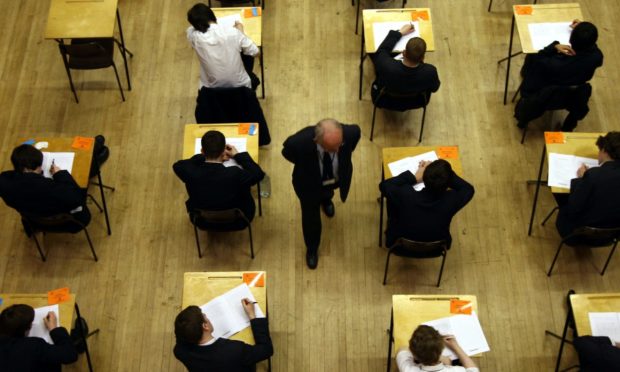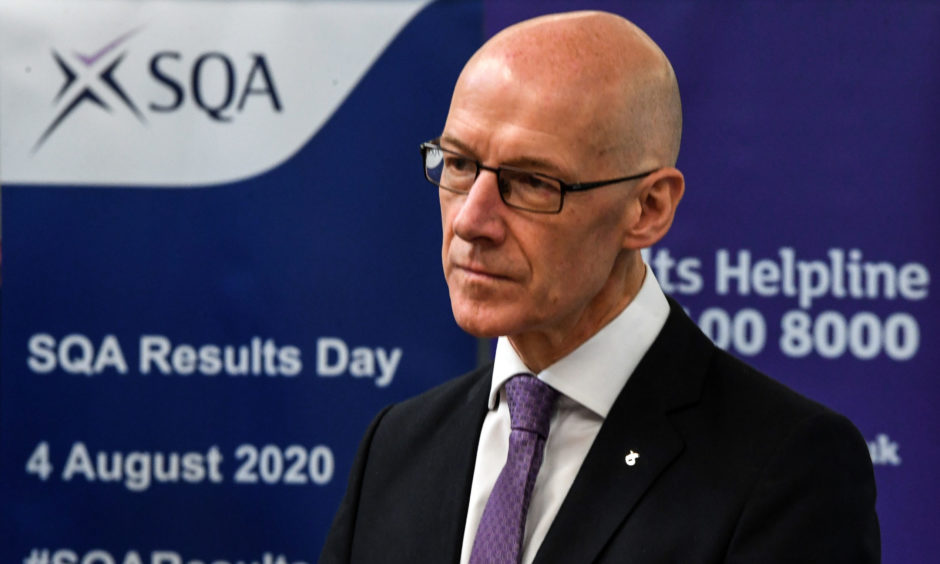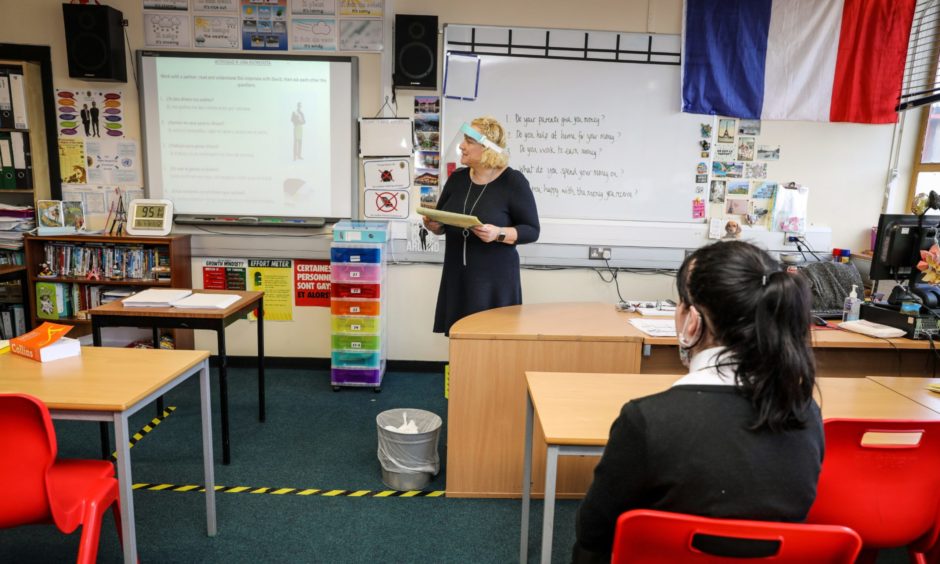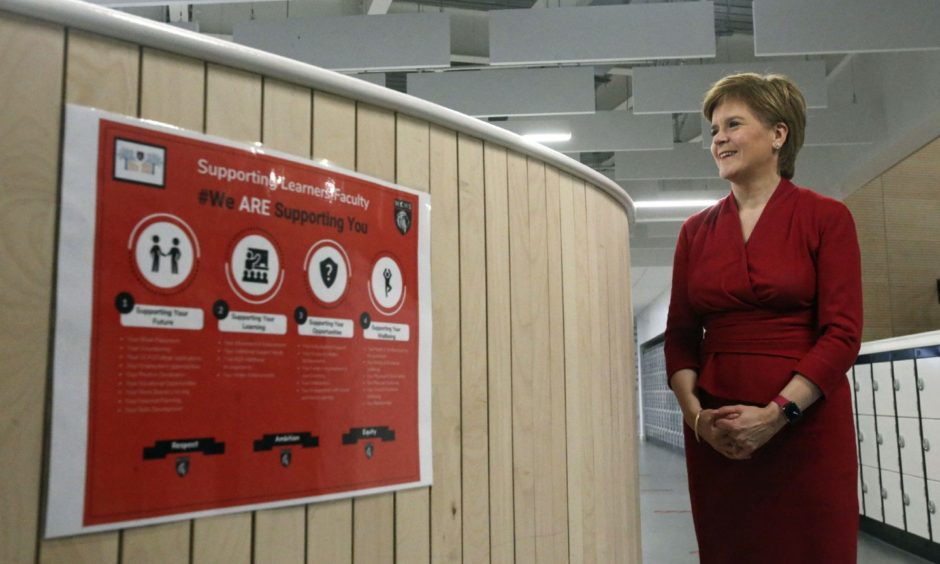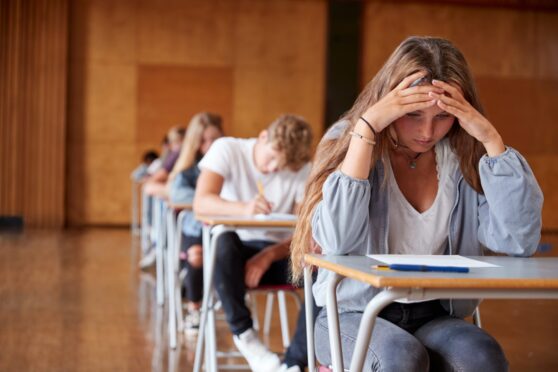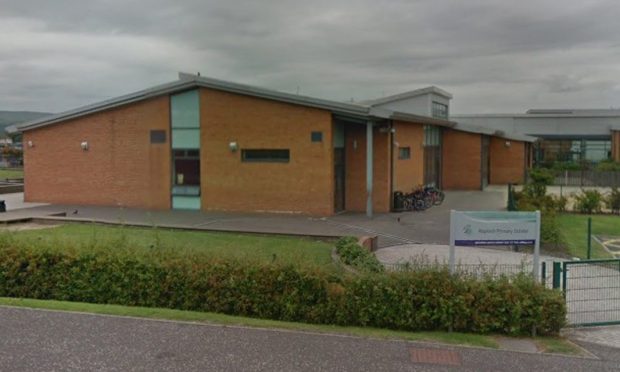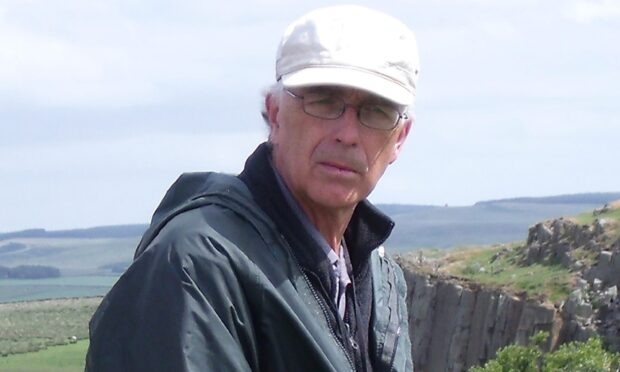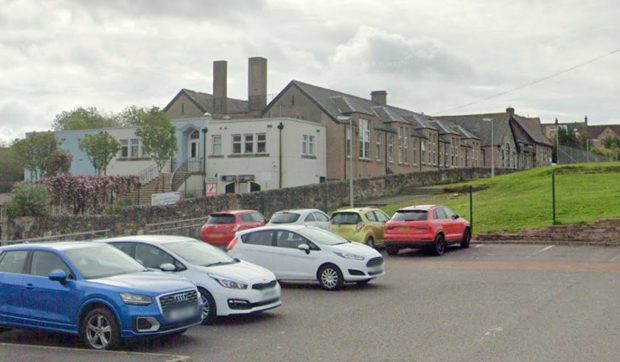Education Secretary John Swinney expects to make an announcement before the October break setting out the plans for school exams next year.
The Deputy First Minister told Holyrood’s education committee he wants exams to go ahead in the spring but the Scottish Government faces a “dilemma” because of the risk of further coronavirus disruption for schools.
Mr Swinney said the Scottish Qualifications Authority (SQA) and the Education Recovery Group is already working on contingency plans should exams not go ahead but said it remains his “ambition” that the spring exam diet happens.
The SNP politician also made clear he will present his plan for exams before schools go off for their October holidays.
When schools closed towards the start of the pandemic, the Scottish Government asked the SQA to develop a replacement grading system in the absence of exams.
However, the examination authority’s moderation process sparked widespread controversy after it disproportionately downgraded teachers’ evidence-based estimates for pupils from poorer backgrounds and relied, in part, on the historic performances of schools.
Mr Swinney told the committee the Scottish Government must learn lessons from the exams cancellations this year and will consider a report into the problems, with the findings due by the end of September.
Here is what else came to light at Wednesday’s committee meeting:
Will exams go ahead in 2021?
Mr Swinney said his “ambition” remains to run a 2021 exam diet in late April and in May but the SQA and Education Recovery Group are currently working on contingency plans.
The education secretary said there is “no way of knowing” what circumstances the country will face in spring next year when “in normal circumstances” the exam diet would take place.
Professor Mark Priestley of Stirling University – who is currently carrying out an independent review into the process behind the controversial exam results debacle – is due to report his findings by the end of the month.
This will include recommendations for assessment this year, with Mr Swinney describing this report as “important in my consideration of the dilemma that we are facing”.
The SQA has consulted on measures to modify post-assessment for national qualifications this year in the timetabling of exams.
This will be published in early October, after the outcome of Mr Priestley’s review.
The education secretary also said there would be “practical and logistical issues” that would have to be “wrestled with” in order to deliver the exam diet safely.
Mr Swinney gave the example that some schools in the country have certain courses which would require more than 200 young people to be accommodated to undertake an exam.
He said: “The largest number of individuals that we can have in a school hall environment physically distanced is probably about 50.”
What could the contingency plans look like?
The education secretary said one of the government’s “fundamental objectives” is to protect the reopening of schools and the delivery of full-time education.
There “may be a requirement” to use blended learning, which may be at an individual level, for those required to self-isolate, or it could relate to classes.
Her Majesty’s Inspectorate of Education has been asked to review the plans that individual local authorities have put forward.
Mr Swinney said he would like to “avoid at all costs” giving teachers an increased workload if they have to prepare for two scenarios but admitted teachers are already under “significant pressure” teaching in a pandemic.
He added: “I’m not in a position just now to say anything definitive but I do want to be in a position to be definitive before the October break to provide that clarity to members of the teaching profession and to pupils.”
What is the current staffing situation in schools in relation to Covid-19?
Around 2% of school staff are absent due to Covid-19, according to the most recent data, but this is a figure which “fluctuates on a daily basis”, Mr Swinney said.
He added this is mostly down to the requirement to self-isolate but said staff who find themselves in this position but feel fit and healthy can continue to contribute through online learning.
Further surveillance work, led by Public Health Scotland, will also provide the Scottish Government information on any “issues and experiences” of Covid-19 across the school estate and school population.
Did the Scottish Government enter the pandemic with enough teachers?
Scottish Conservative education spokesman Jamie Greene asked the education secretary if the Scottish Government had enough teachers at the outset of the pandemic.
In his response, Mr Swinney said teacher levels were at their highest level since 2010, with the number of primary teachers at the highest level since 1980.
The most recent data shows councils across Scotland have recruited an additional 1,118 teachers, with “ongoing discussions” between local authorities and individual candidates in another 250 cases.
The General Teaching Council, along with directors of education, have also been tasked with identifying members of the teaching register who are qualified teachers but who are not currently teaching, to see if they would be available should there be “challenges” over the period ahead.
Mr Swinney said from his recollection this involves between 2,000 to 2,500 teachers.
Have Scottish schools been impacted by the pressure on testing capacity south of the border?
The first minister announced on Monday that she is seeking “urgent talks” with the UK Government over a backlog of coronavirus test results south of the border.
Nicola Sturgeon revealed proposals to limit access to testing in Scotland to ease pressure had been rejected during discussions between health secretary Jeane Freeman, her counterpart at Westminster, Matt Hancock, and the other devolved administrations.
The first minister also suggested the return of English schools may have contributed to a surge of demand, similar to the one seen in Scotland last month.
Alex Neil MSP asked Mr Swinney whether the Scottish Government can guarantee Scotland will not be put to the “back of the queue”, if the crisis down south continues.
Mr Swinney said 2,500 children and young people were tested for coronavirus in the first week of schools returning from August 11.
In the third week of schools returning, 25,000 young people of school age were tested, which he said was a measure of the “increased concern” of parents.
A “range of measures” are being undertaken to expand testing as it will be required as winter approaches, the education secretary confirmed.
Mr Swinney said this will include an expansion of walk-in test centres, which are available in areas with a high student population.
He also said school staff can secure a test for coronavirus through their employment portal, regardless of whether they are displaying symptoms or not, and that the option is available to assist in sustaining staff numbers in schools.
The first minister made clear the importance the Scottish Government attaches to making sure there is “fair, appropriate and equitable access” to that testing capacity for tests that have to be undertaken within Scotland, Mr Swinney added.
